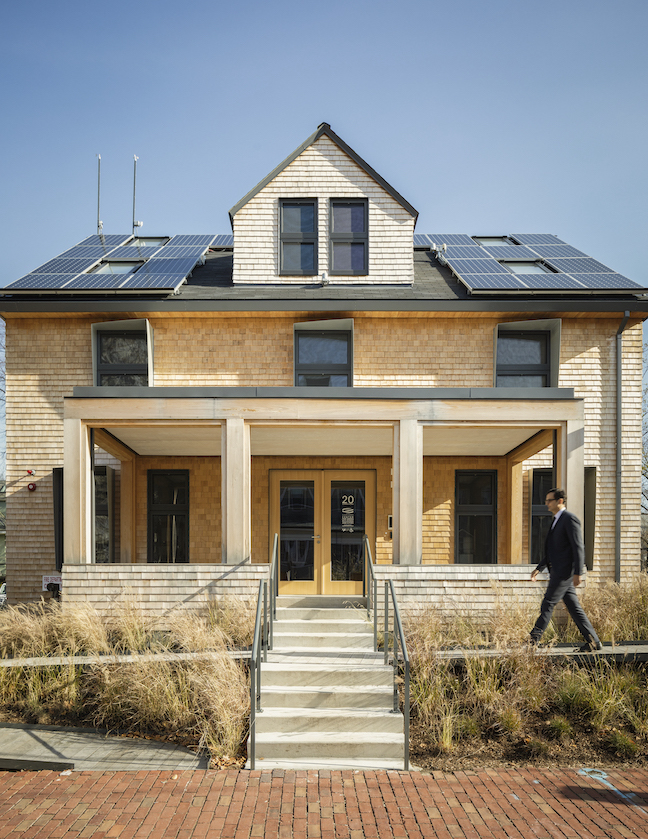
Newly published research in the peer-reviewed journal Energy and Buildings shows that the Harvard Center for Green Buildings and Cities’ HouseZero achieves a high level of energy efficiency with a combination of natural ventilation and a thermally active building system (TABS). With TABS, water flowing through pipes embedded in reinforced concrete is used to heat or cool a building, minimizing temperature fluctuations. A year-long assessment of the building’s ventilation and TABS presents the first comprehensive look at HouseZero’s energy efficiency.
“The research supports the effectiveness and success of [HouseZero’s] integrated system configurations and control strategies,” writes the Harvard Center for Green Buildings and Cities in a press release. “Specifically, the data demonstrates that the natural ventilation and TABS integration can effectively control the indoor thermal environment while achieving high energy efficiency. This is also reflected by the low annual energy consumption for heating and cooling described in the paper.”
HouseZero—which functions both as the headquarters for the Harvard Center for Green Buildings and Cities and as an experimental laboratory—was unoccupied during the first year of data collection due to the pandemic. But the research contains valuable information about the building’s performance and will help to inform strategies to minimize gaps between design intents and building operation. It also includes a set of takeaways that can be applied to retrofitting and operating similar structures.
“Comprehensive Assessment of Operational Performance of Coupled Natural Ventilation and Thermally Active Building System via an Extensive Sensor Network” is co-authored by Bin Yan, Xu Han, Ali Malkawi, Tor Helge Dokka, Pete Howard, Jacob Knowles, Tine Hegli, and Kristian Edwards and appears in Volume 260 of Energy and Buildings (1 April 2022).